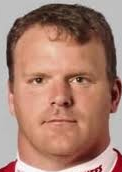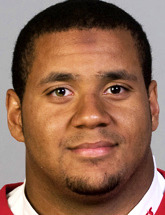
Throughout the season, Pro Football Spotlight has been breaking down every play of every game to bring the fan a more accurate, in depth analysis of the offensive line for each AFC West team. We have attempted to bring you an unbiased, offensive lineman friendly view of what is going on in the trenches. We hope these breakdowns have helped you understand the value of EVERY offensive lineman…not just the All-Pro players.
The reviews have also provided us with a good starting point in analyzing what positions might need to be upgraded for the next season. We at PFS believe if a team is not getting better, then they are getting worse. Because we guarantee you, the teams in the rest of the divisions are trying to get better.
This article will attempt to take a critical look at each position on the offensive line, suggest minor changes or radical changes, and evaluate the potential of the offensive line in 2012.
The chart, below, is each offensive lineman’s performance during the 2011 season. The first area to look at is each lineman’s run blocking consistency. Blocking constancy is simply the percentage of time the lineman just “did his job” (plain and simple). It has nothing to do with how well he looked, how much movement he gets on his blocks, is he a drive blocker or more of a shield blocker…just plain, old, doing the task at hand, i.e., not letting his assigned defender make a tackle or cause too much of a problem on the play.
Around 80% is the number we look for when evaluating an NFL offensive lineman’s consistency. If the lineman is at or above 80% consistency, then he is good enough to be an NFL starter. Now, that doesn’t mean his job is safe. It simply means, the lineman can get the job done consistently and could be of value to his team.
 |
 |
 |
 |
 |
|
| Branden Albert |
Ryan Lilja |
Casey Wiegmann |
Jon Asamoah |
Barry Richardson |
|
| Run Consistency | 81% | 77% | 80% | 81% | 80% |
| Run Dominance | -3 | -14 | -40 | -11 | -2 |
| Pressures | 11.1% | 10.7% | 7.6% | 7.8% | 17.1% |
The second area to look at is each lineman’s run blocking dominance score. Run dominance is a running “punch count” (if you will) on how often the offensive lineman dominated his defender (i.e., drove the defender or got good movement) compared to how often the defender dominated the offensive lineman. Surprisingly, for PFS, most linemen don’t get positive overall scores in run dominance. With that in mind, anything from -10 to +0 is considered okay in run blocking dominance. If the lineman does get an overall positive dominance score, and the AFC West has a few of those, then you have a very good run blocking lineman.
The last area to look at is the offensive lineman’s ability to protect the quarterback. Many times, offensive linemen are unfairly measured by simply looking at the number of sacks they give up. While sacks are important, total pressures are more telling in how often the offensive lineman’s blocking affects the play.
You can see in the chart, below, that the Kansas City Chiefs, like most AFC West teams, have a tendency to run the ball directly at the center of the formation. In the recommendations, later in this article, we will consider this trend when recommending changes along the offensive line.
| Left End | Left Tackle | Left Guard | Up the Middle | Right Guard | Right Tackle | Right End | ||||||
| No: 76 | No: 51 | No: 22 | No 165 | No: 40 | No: 41 | No: 78 | ||||||
| Rank: 5 | Rank: 19 | Rank: 29 | Rank: 4 | Rank: 21 | Rank: 26 | Rank: 4 |
In 2011, the Kansas City Chiefs had problems getting movement along the offensive line. The Chiefs were stuffed 20% of the time on run plays. That means that the Chiefs were held to no gain or negative yards on 20% (21st in NFL) of their plays. That lack of production, in part, is a result of the Chiefs inability to dominate defenders, physically, at the line of scrimmage.
With all the stats, above, in mind…lets talk about each offensive line position.
Right Tackle: Barry Richardson held the right tackle position in 2011. Barry had a decent year in the run blocking department, not great, but more than acceptable. He ends the year with a -2 power score in run blocking, which is respectable. Unfortunately for the Chiefs, Richardson is a liability in pass protection. Something the Chiefs cannot afford to ignore any longer. In previous years, the Chief’s management has had other areas of concern to justify ignoring, or putting off changes that might have been needed. But no longer. The Kansas City Chiefs MUST improve their offensive line, offensive line depth, and address key running deficiencies in 2012.
The Kansas City Chiefs need to actively seek, and upgrade, the right tackle position. And based on what the Chiefs like to do…that upgrade must (a) Be athletic enough to seal the edge for Jamaal Charles, (b) Have some power, but not at the expense of pass blocking. The right tackle must be able , at least, to have the ability to combo run block with the right guard and drive a stout defender. Something the Chiefs did very little of this year. (c) And, be an upgrade in pass protection.
One option for the Chiefs, which has been batted around by fans for years, is to move Branden Albert to right tackle. This is the first year in which PFS might accept that notion. First, Brandon Albert is an average left tackle in the NFL. Albert has been given more than enough time to access his skills. He has proven that he will do well against average pass rushers and struggle against dominant ones. But at right tackle, a position that is increasingly becoming an area that requires more pass protection expertise throughout every NFL team, Albert would be a very good pass blocker. If fact, he just might immediately be the best pass blocking right tackle in the AFC West.
Other options for the Chiefs would be free agency or the NFL draft. If the Chiefs choose to draft a player, look for the right tackle to be taken in the 1st or 2nd round. If in the 1st round…then look for someone like Riley Reiff from Iowa, a well-rounded and versatile player with experience playing both right and left tackle. He could come in and take over the right tackle position and after some experience, if ready and significantly better, move to left tackle.
Right Guard: In 2011, Jon Asamoah played for the Kansas City Chiefs at right guard. Jon showed that he could be a consistent NFL starter by earning an 81% run blocking consistency grade. Tthe Chiefs need Asamoah to improve his power blocking (which typically improves after being more established). The Chiefs run the ball 227 times between the guards in 2011. If you are going to do that, then you better have a guard tandem that can move people off the ball…something the Chiefs didn’t have.
Jon Asamoah appears to be the Kansas City’s right guard of the future. There is no doubt he will get better as he gets more years’ experience under his belt.
Center: The center position was held down by Casey Wiegmann in 2011. Wiegmann has served the Chiefs well with his leadership, his consistency (80% run blocking consistency score), and his uncanny ability to block on the 2nd level. But it is time for an upgrade.
The one thing the Chiefs didn’t, or couldn’t, do in 2011 is get movement along the offensive line…and the center position was one of the contributors to that ineffectiveness. Wiegmann, despite his value, ended the year with a -40 run dominance score. That means that he was not only not getting a lot of movement, but many times, he was also getting moved.
Fortunately, the Chiefs have Rodney Hudson waiting in the wings. Rodney Hudson was drafted last year and in his brief appearances on the field, appeared to be well on his way to starting in 2012. The Chiefs could put Hudson at center, a position he played in college, or at left guard, a position he did some sub time for the Chiefs in 2011.
Based on what the Chiefs “appear” to want to do…PFS would assert that Kansas City needs two athletic, pass protecting bookends and at least two semi-athletic, power blocking guards/center. With this combination, the Chiefs can catch the edges with Charles and run a power game inside. And since the Chiefs have speed (with Charles) and have a tendency to want to run up the gut anyway…it seems obvious that this would be the model to aspire toward.
Left Guard: If the model just stated, above, is truly the direction the Chiefs would like to aspire towards…then the position of left guard needs to be upgraded. Ryan Lilja came to the Kansas City Chiefs in a time of great need…and he has done well to fill that need. But as the Chiefs start to build their team, develop it toward a higher standard…Lilja might not have the skills needed to move forward.
It is the opinion of PFS that the Chiefs need a Brian Waters at left guard. No, not actually the person, Brian Waters, but the Chiefs need a powerful left guard. A player that can get movement on the line of scrimmage, run double with the center and move that stout nose tackle. Unfortunately, Ryan Lilja is not that person.
There are a couple of ways the Chiefs could go at this position. They could, of course, elect to keep Ryan Lilja at left guard in the hopes that the upgrade in stoutness at center (Hudson) is sufficient. PFS thinks this is sufficient, only if the Chiefs are grooming a power blocking left guard in the process…possibly a 3rd or 4th round pick in the upcoming Draft.
Left Tackle: The jury is now out on Branden Albert. No more time is needed, no more excuses, not another year to see how he will do…Branden Albert is an average left tackle in the NFL. What that means is that the Chiefs don’t have to run out in a panic to fill the left tackle position…if they have other needs. But the fact of the matter is, that Branden Albert IS an average left tackle. And on a team that aspires to be somewhere other than sitting at home for the playoffs…that might not be good enough.
First, PFS would like to put to bed the notion that Branden Albert could be moved to left guard. Yea, he could play the position but…1) he is too good of a pass blocker to be wasted at guard in the NFL. Players of his pass blocking ability need to be at one of the two tackle positions. 2) PFS is going with the model of athletic tackles with powerful guards/center. Branden Albert is the former and not the latter.
The Chiefs could go a number of different directions, here.
A) The Chiefs could keep Albert at left tackle, draft a right tackle in the 2nd round, with no intention of upgrading the left tackle position.
B) The Chiefs could attempt to upgrade both left and right tackle, the most efficient way, by drafting a better pass blocking left tackle in the first round and moving Albert to right tackle. This option brings only one player in, but upgrades two different positions.
C) Kansas City could draft a tackle in the first round, possibly Riley Reiff from Iowa, with the idea of putting him at right tackle until he is groomed to take over the left tackle position (Assuming he would be better than Albert).
Despite the direction the Kansas City Chiefs decide to go during this off-season…one thing is for sure. The offensive line can no longer be patched. It must be upgraded, groomed, into a quality unit. Anything less is unacceptable.
 Followers
Followers

 January 13th, 2012
January 13th, 2012  Bewsaf
Bewsaf
 Posted in
Posted in  Tags: Barry Richardson football, Branden Albert, Jon Asamoah,
Tags: Barry Richardson football, Branden Albert, Jon Asamoah,